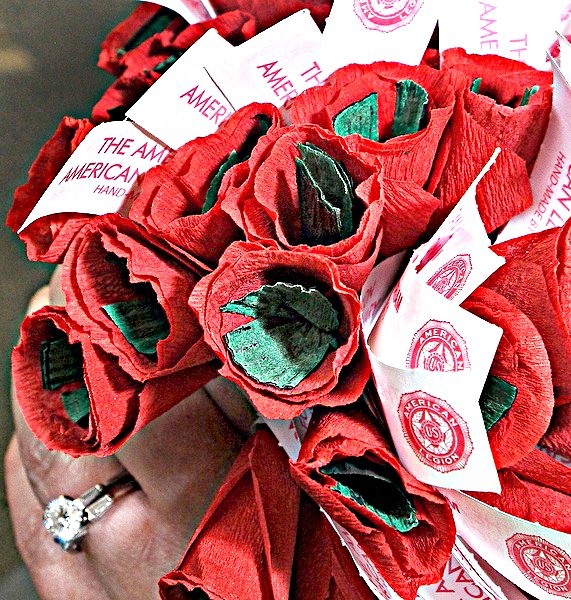The Flanders Field poppy has become an internationally known and recognized symbol of the lives sacrificed in war and the hope that none died in vain.
In the battlefields of Belgium during World War I poppies grew wild amid the ravages of war. The overturned soils of battle enabled the poppy seeds to be covered, allowing them to grow and forever serve as a reminder of the bloodshed of war.
Replicas of poppies were first distributed in other countries following the end of World War I, and were inspired by the poem “In Flanders Fields,” written by Col. John McCrae of Canada in 1915 during World War I. In 1918 Moina Michael popularizes the idea of wearing the red poppy in memory of the lives lost in WWI. In 1920 the poppy becomes the official flower of the American Legion Auxiliary to memorialize soldiers who fought and died during the war. Connecting the visual image of the poppy with the sacrifice of service made by our veterans has been an important goal of the American Legion Auxiliary poppy Program since its inception in 1921. The Poppy Program raises community awareness and respect for veterans by educating the public about the symbol of the poppy, taken from a line in the poem.
In Flanders Fields
By John McCrae
In Flanders fields the poppies blow
Between the crosses, row on row,
That mark our place; and in the sky
The larks, still bravely singing, fly
Scarce heard amid the guns below.
We are the Dead. Short days ago
We lived, felt dawn, saw sunset glow,
Loved and were loved, and now we lie,
In Flanders fields.
Take up our quarrel with the foe:
To you from failing hands we throw
The torch; be yours to hold it high.
If ye break faith with us who die
We shall not sleep, though poppies grow
In Flanders fields.





